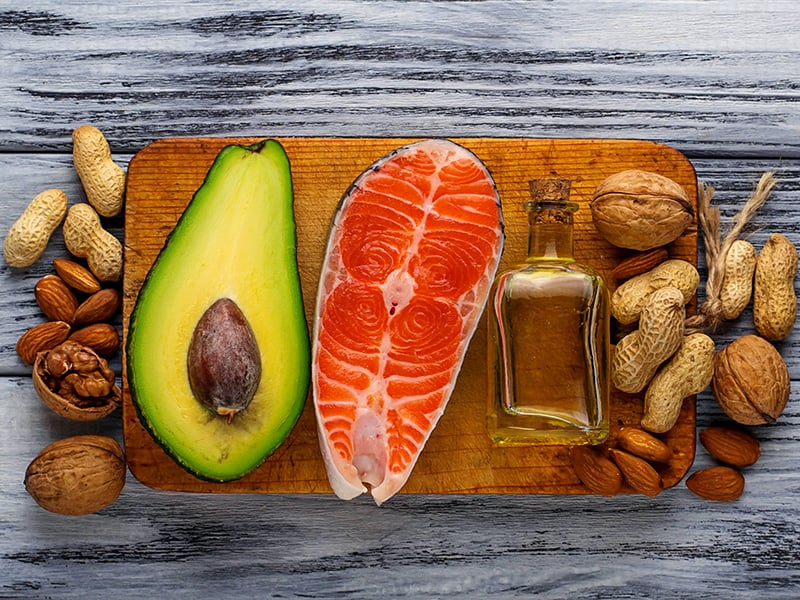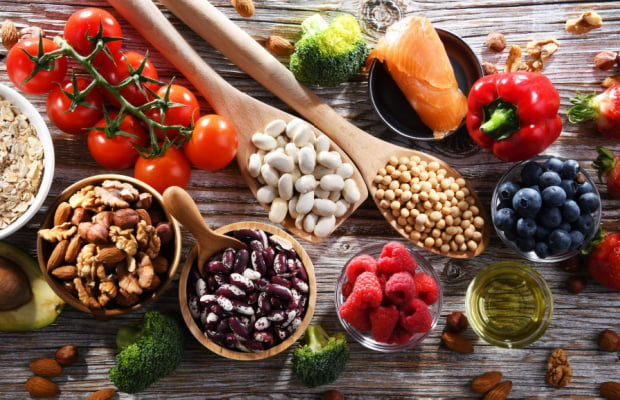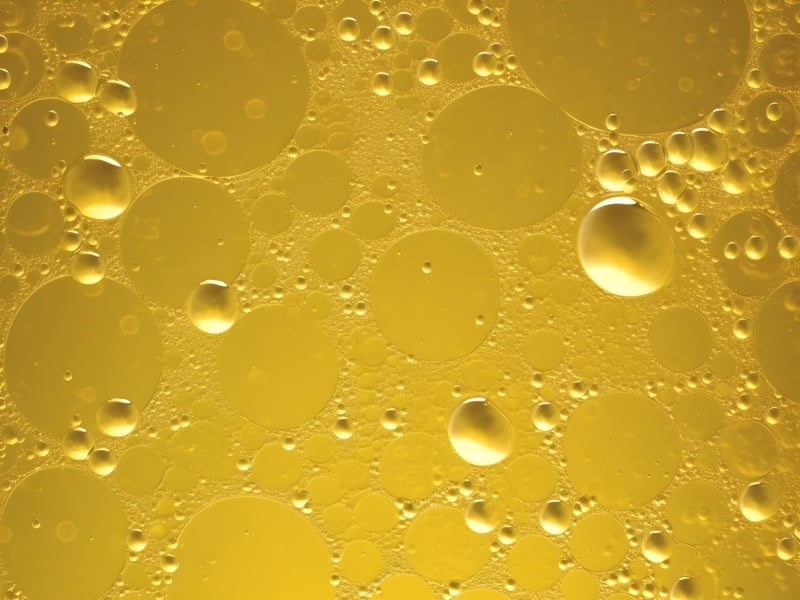
Healthiest cheeses ranked
Discover whether Cheddar, Stilton, Brie, mozzarella, feta, ricotta or mascarpone is healthiest. Our list ranks 33 cheeses by the amount of fat, saturated fat and salt they contain.


On this page
Cheese is a major contributor to unhealthy saturated fat and salt in our diet, which can lead to high cholesterol and high blood pressure which are risk factors for cardiovascular disease.
So to help you choose the healthiest ones, we've ranked 33 popular cheeses as low, medium or high-fat in terms of their total fat content per 100g, alongside how much saturated fat and salt they contain.
The table below lists these cheeses including Cheddar, Stilton, Brie, mozzarella, feta, ricotta and mascarpone, and further down you can see more nutritional details on 11 of them.
|
Type of cheese |
Total grams of fat per 100g |
Saturated fat grams per 100g |
Salt grams per 100g |
|
Low fat (total fat 3g or less per 100g) |
|||
| Quark | 0.2 | 0.1 | 0.11 |
| Reduced-fat cottage cheese (plain) | 2 | 1 | 0.5 |
|
Medium fat (total fat 3.1g to 17.5g per 100g) |
|||
| Cream cheese (low fat) | 4 | 2 | 0.65 |
| Cottage cheese (plain or with additions such as pineapple) | 4 | 2 | 0.6 |
| Ricotta | 8 | 5 | 0.25 |
| Reduced-fat processed cheese | 13 | 8 | 2.0 |
| Half-fat cheddar | 16 | 10 | 1.7 |
| Leerdammer lite | 16 | 11 | 1.5 |
| High fat (total fat more than 17.5g per 100g) |
|||
| Mozzarella | 18 | 13 | 0.7 |
| Feta | 20 | 14 | 2.5 |
| Plant-based cream cheese | 21 | 17 | 0.76 |
| Camembert | 23 | 14 | 1.5 |
| Processed cheese (e.g. cheese slices, cheese strings) |
23 | 14 | 2.5 |
| Halloumi | 23 | 17 | 3.0 |
| Paneer (made from whole milk) | 24 | 15 | 0.05 |
| Cream cheese spread (full fat) | 25 | 16 | 0.65 |
| Plant-based cheddar | 26 | 22 | 2.1 |
| Edam | 26 | 16 | 2.5 |
| Soft goat's cheese | 26 | 18 | 1.5 |
| Port Salut | 26 | 18 | 1.7 |
| Jarlsberg | 28 | 18 | 1.5 |
| Leerdammer | 28 | 19 | 1.7 |
| Brie | 29 | 18 | 1.39 |
| Plant-based Greek cheese | 29 | 26 | 1.7 |
| Parmesan | 30 | 19 | 1.66 |
| Emmental | 30 | 20 | 0.5 |
| Hard goat's cheese | 32 | 20 | 1.9 |
| Vegan camembert flavour cheese | 31 | 28 | 1.7 |
| Gouda | 31 | 20 | 2.3 |
| Cheddar, Red Leicester, Double Gloucester and other hard cheeses |
35 | 22 | 1.8 |
| Stilton | 35 | 23 | 1.97 |
| Manchego (hard sheep's cheese) | 39 | 28 | 2.49 |
| Mascarpone | 44 | 29 | 0.175 |
Low-fat cheeses
Quark

A soft, fresh cheese, Quark has a creamy texture and mild tangy taste. It’s very popular in Germany and Eastern Europe.
Like most cheeses, Quark is high in protein and contains minerals, including calcium, which is important for bones and teeth. Unlike most other cream cheeses, it’s virtually fat-free and has no added salt.
-
Get our recipe for macaroni cheese, made with quark.
Reduced-fat cottage cheese

This curd-based fresh cheese naturally contains less fat than other cheeses. Standard cottage cheese contains 4 per cent fat (2 per cent saturated fat). However, you can buy low-fat versions which contain 2 per cent fat, of which 1 per cent is saturated fat.
Its name is believed to have originated because the simple cheese was usually made in cottages from any milk left over after making butter.
It can be eaten by itself, with fruits and vegetables or as a jacket potato filling. It’s better to add your own flavourings to avoid the extra sugar and salt that can come with pre-mixed versions.
- Get our recipe for loaded rice cakes with cottage cheese.
Medium-fat cheeses
Ricotta

This is one of the world’s oldest cheeses, dating back to the Bronze Age. Ricotta is an Italian curd cheese made from whey left over from the production of other cheese.
Compared to most cheeses, ricotta is a healthier choice because it contains less salt and fat - 8 per cent fat, of which 5 per cent is saturated.
It’s light and creamy with a slightly grainy texture and delicate flavour that can be used on its own or in sweet and savoury dishes.
You can use it instead of mozzarella or other cheeses to top your pizza, or crumble it into warm pasta for a delicious and healthy dish.
- Get our recipe for chicken breasts stuffed with pea pesto and ricotta.
Half-fat Cheddar

Cheddar is the most popular type of cheese in the UK, originating in the English village of Cheddar in Somerset around the late 12th century.
Cheddars vary in flavour depending on the length of ageing and their origin. The half-fat version isn’t low in fat or salt but contains about half as much fat as the standard variety so it’s a good switch to make. On average it contains 16 per cent fat of which 10 per cent is saturated.
For comparison, standard Cheddar contains about 35 per cent fat, of which 22 per cent is saturated.
Half-fat Cheddar cheese is a good swap for standard cheddar on a cheeseboard or for using as a sandwich filling.
- Try our recipe for cauliflower cheese with reduced-fat Cheddar.
High-fat cheeses
Mozzarella

Mozzarella is a semi-soft cheese traditionally made from Italian water buffalo milk by heating the curds in water or whey until they become elastic in texture.
These days mozzarella is more often made from cow’s milk. It melts well and has a unique stretchiness, making it the classic pizza topping cheese.
The kind of mozzarella you buy in a ball typically contains about 18 per cent fat and 13 per cent saturated fat.
Choose a reduced-fat version instead (typically 10 per cent fat and 7 per cent saturated fat), it works just as well on pizza or in a salad with tomatoes and avocado.
Most of us use less cheese when it’s grated rather than sliced, for example if you’re topping a pizza. Italian mozzarella can be tricky to grate, though, so if topping a pizza, try tearing the mozzarella into small pieces and scattering it thinly.
Buffalo mozzarella is usually higher in fat, typically 24 per cent fat and 17 per cent saturates.
- Try our recipe for chicken and pepper pitta pizzas with light mozzarella.
Feta

Feta is a creamy, tangy and crumbly cheese made in Greece from sheep's milk, or from a mixture of sheep and goat's milk. It has a strong flavour, so a little goes a long way.
Feta cheese is lower in fat than many cheeses (around 20 per cent, 14 per cent saturated) but it’s high in salt, so avoid adding additional salt when cooking with feta.
Reduced-fat feta is a healthier choice (though still high in salt) and is quite widely available. Similar cheeses are sometimes sold as ‘salad cheese’, as it can’t be legally called feta if made from cow’s milk or made outside Greece.
Feta goes particularly well with summer vegetables such as tomatoes, cucumbers, aubergines and courgettes – why not try it in a Greek-style salad with salad leaves and plenty of tomatoes and cucumber?
- Get the recipe for watermelon, butter bean, feta and orange salad.
Camembert

Camembert is a soft, creamy, surface-ripened cow's milk cheese. It was first made in the late 18th century at Camembert, Normandy in northern France. It has a rich flavour which can range from buttery to pungent, depending on the type of Camembert and its age.
Camembert’s creamy texture may mean it looks like the bad boy of the cheese board, but it contains less fat than some other cheeses (at around 23 per cent, 14 per cent saturated). It ranks medium for salt (1.5g or more per 100g), so go easy on how much you eat. Deep fried camembert comes with even more fat.
Brie

Brie is a soft cows' milk cheese that is named after the province in France in which it originated. Similar in texture to Camembert, but with a higher fat content (29g per cent, 18 per cent saturated), Brie is produced from whole or semi-skimmed cow's milk.
Although it is high in fat, Brie still has less fat than Cheddar or Stilton. Look out for ‘light’ versions of brie which will have less fat.
Parmesan

Parmesan is a very hard cheese which has been made from cow's milk in and around the Italian province of Parma for the past 8 centuries or more.
Parmesan cheese is high in salt (1.7g per 100g). It is also high in fat (30 per cent fat, 19 per cent saturated fat). However, the good thing about Parmesan is that its strong flavour means you don’t need to use much.
It works particularly well as a substitute for cheddar if you are grating cheese for pasta dishes that have a cheese topping, like lasagne. Or you could try it in a normal cheese sauce – use a smaller amount than you would usually because of its strong flavour.
- Get our recipe for Italian bread soup with Parmesan.
Stilton

Stilton is an English cheese named after the village of Stilton where the cheese was first made. Nowadays, it can only be made in the three counties of Derbyshire, Leicestershire, Nottinghamshire from regional cow’s milk.
It’s produced in two varieties: blue and white. Blue Stilton is soft and crumbly, with a tangy flavour and blue veins. White Stilton has a milder flavour but the same texture, sold often with added flavourings such as dried fruit.
Stilton has a fat content of 35 per cent (23 per cent saturated) and nearly 2g of salt per 100g, making it a cheese to be eaten occasionally.
Mascarpone

Mascarpone is an Italian cheese from the Lombardy region made from just two ingredients: whole cream coagulated by the addition of citric or tartaric acid.
Mascarpone is an ingredient of some famous Italian desserts like tiramisu. It is not the best choice for your heart health as it’s one of the highest fat cheeses (44 per cent, of which 30 per cent is saturated).
Try substituting half the mascarpone in recipes with low-fat Greek yoghurt for a healthier approach, or substitute it for Quark or a low-fat cream cheese instead.
- Get the recipe for a healthier version of creamy 'Marry Me' chicken.
What to read next...

Donate today


More useful information
6 surprisingly healthy fatty foods

5 cholesterol-lowering foods



